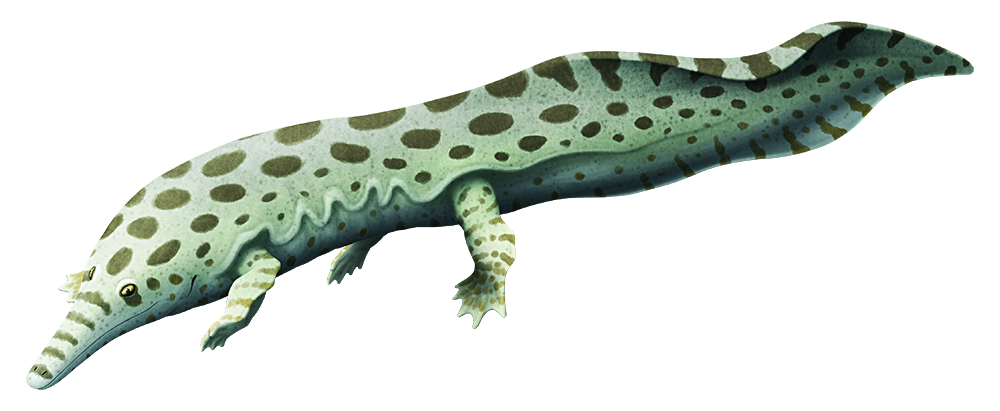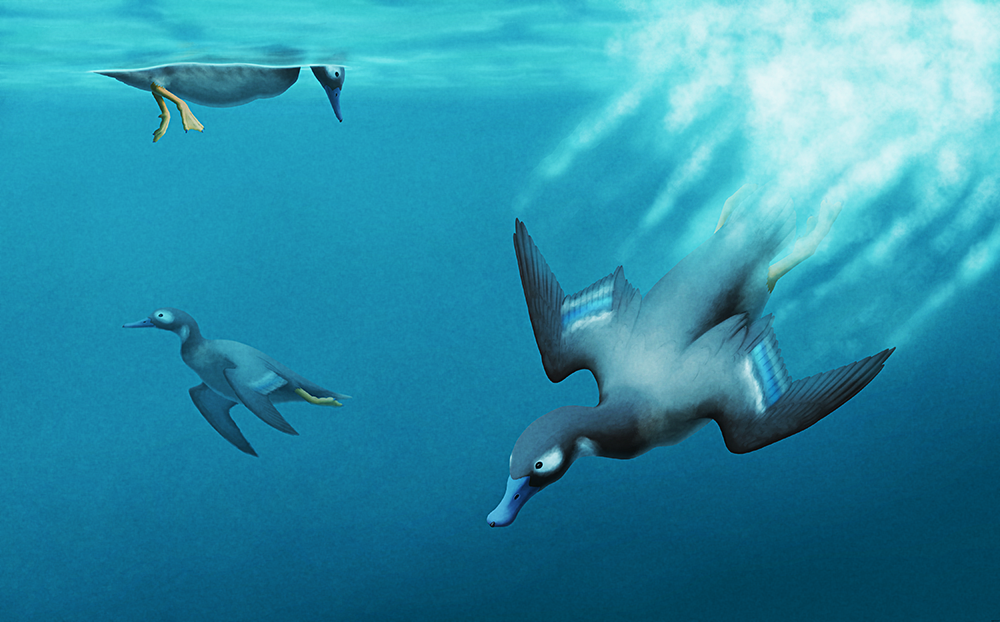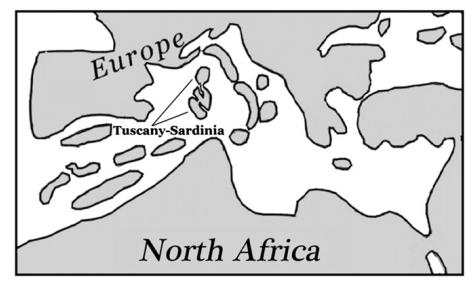There’s something fishy about Archegosaurus decheni.
Living in the Czech Republic and Germany during the Early Permian, about 299-295 million years ago, this temnospondyl amphibian was a tropical freshwater predator occupying a similar ecological niche to modern crocodilians.
Hundreds of fossils have been found of this species, from 15cm long larvae (6″) all the way up to 1.5m long adults (5′), so we’ve got a very good idea of its life history and anatomy. Larvae had external gills and shorter blunter skulls, and as they matured they developed internal gills and lungs, and their snouts elongated into more crocodile-like shapes. Every life stage was fully aquatic, with very limited ability to venture onto land, and gut contents show their favored prey was Acanthodes fish.
But despite how much Archegosaurus looked like a salamander-croc, a detailed study of its physiology has estimated that its metabolism and body functions were actually much more similar to those of air-breathing fish like bichirs and lungfish than any modern amphibian.
This suggests that its whole evolutionary lineage had retained a lot of physiological traits from their earlier fish-like tetrapod ancestors, and many other early aquatic temnospondyls may also have been much less amphibian-like than we usually think of them.
(And since one hypothesis places modern caecilians as the descendants of this fishy lineage of amphibians, they may even still have living representatives around today!)





